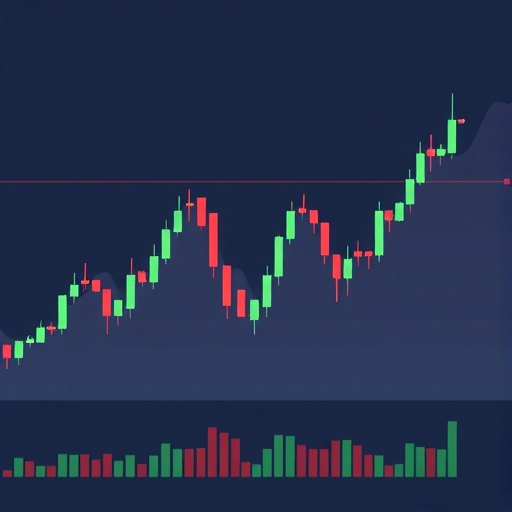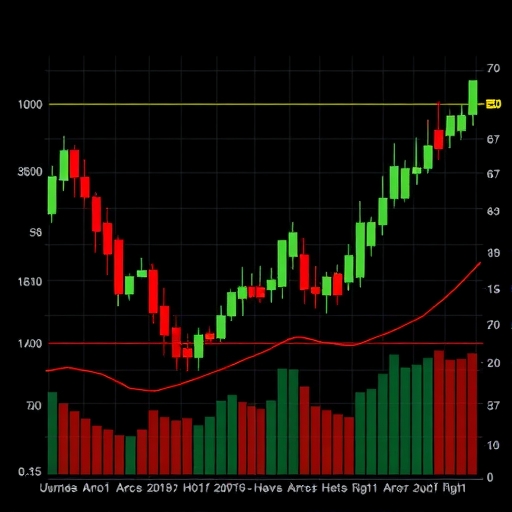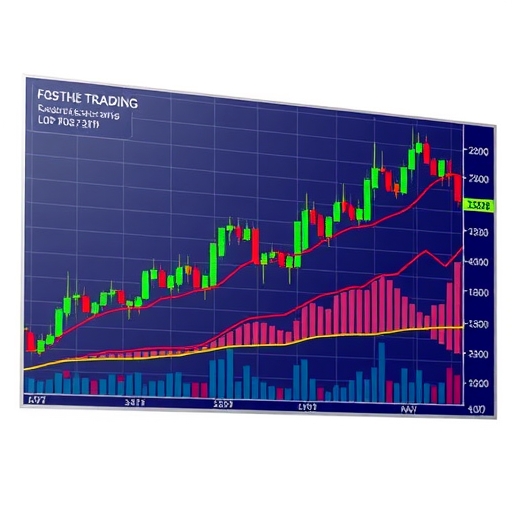Unlocking Crypto Potential: A Comprehensive Guide to Leverage Trading
Are you looking to amplify your cryptocurrency trading potential, perhaps controlling larger positions than your initial capital allows? The world of digital assets offers powerful tools for savvy traders, and among the most potent is leverage trading. This advanced strategy, while offering significant opportunities for magnified returns, also comes with magnified risks. Understanding its mechanics, benefits, and crucial safeguards is paramount for anyone venturing into this high-octane segment of the crypto market. In this guide, we will demystify leverage and margin, explore the advantages and inherent dangers, outline essential risk management practices and trading strategies, and help you navigate the process of selecting a reliable trading platform.
Demystifying Leverage and Margin in Crypto Trading
To truly grasp crypto leverage trading, we must first understand its foundational components: leverage and margin. Think of leverage as a financial superpower that allows you to control a much larger trading position with a relatively small amount of your own capital. It’s like using a small key to open a very large vault; you’re not moving the vault itself, but you gain control over its contents. This is achieved by borrowing funds from a cryptocurrency exchange, which then amplifies your potential profits – and, critically, your potential losses.
The extent of this amplification is expressed as a leverage ratio, such as 10x, 50x, or even 500x. A 10x leverage means that for every $1 of your own capital, you can control a position worth $10. If you have $100 and use 10x leverage, you can open a trade worth $1,000. This brings us to margin, which is the initial deposit or collateral you are required to put up with the exchange to open and maintain a leveraged position. It acts as a buffer against potential losses. As your trade moves against you, your margin balance decreases. If it falls below a certain threshold, known as the maintenance margin, the exchange may issue a margin call, requesting additional funds. Failure to add more capital can lead to liquidation, where the exchange automatically closes your position to prevent further losses and uncollectible debts.

It’s important to distinguish between margin trading and leverage trading, though they are closely related. While margin trading often refers to using borrowed funds for spot market trades (buying and selling actual cryptocurrencies), leverage trading typically encompasses the broader concept of amplifying position size, commonly used in derivatives markets like perpetual futures contracts. In perpetual futures, the ‘borrowing’ isn’t a traditional loan but rather the collateral (your margin) enabling you to take a larger position. Understanding this distinction is key to navigating the diverse products offered by exchanges.
When you engage in leveraged trading, you’ll typically encounter two main types of margin:
- Cross Margin: This type uses your total account balance as collateral for all your open leveraged positions. While it offers flexibility and can help prevent individual positions from being liquidated prematurely by drawing from other profitable trades, it also puts your entire account balance at risk. A significant market move against multiple positions could wipe out your entire portfolio.
- Isolated Margin: With isolated margin, you allocate a specific amount of margin to each individual position. This means that if a trade goes sour, only the margin allocated to that particular trade is at risk of liquidation, not your entire account balance. This method is often recommended for beginners as it helps limit risk to specific trades and prevents unexpected losses across your portfolio.
Understanding the potential impact of different leverage ratios is crucial for managing risk. The higher the leverage, the smaller the price movement required to trigger a liquidation.
| Leverage Ratio | Required Price Movement for Liquidation (Approx.) | Impact on Potential Profit/Loss |
|---|---|---|
| 5x | 20% | Moderate amplification |
| 10x | 10% | Significant amplification |
| 50x | 2% | High amplification, very sensitive |
| 100x | 1% | Extreme amplification, highly risky |
Beyond perpetual futures, traders might also encounter other forms of leveraged products, each with unique characteristics and risk profiles. These can include traditional futures contracts with expiration dates, options that provide the right but not the obligation to buy or sell, and leveraged tokens designed to automatically rebalance their exposure.
- Traditional Futures Contracts: These are agreements to buy or sell an asset at a predetermined price on a specific future date, often used for hedging or speculation.
- Options Contracts: Giving the holder the right to buy (call) or sell (put) an asset at a set price before a certain date, without the obligation, offering flexibility.
- Leveraged Tokens: These are ERC-20 tokens that provide leveraged exposure to cryptocurrency prices without direct management of margin or liquidation risks, as they automatically rebalance.
The Double-Edged Sword: Benefits and Risks of Leveraged Crypto Trading
Why do traders gravitate towards crypto leverage trading despite its inherent dangers? The answer lies in its compelling benefits, which, when coupled with prudent management, can significantly enhance trading outcomes. However, it’s crucial to acknowledge that these benefits are mirrored by equally significant risks, making leverage a true double-edged sword. Let’s explore both sides.

Benefits of Crypto Leverage Trading
The allure of leverage is undeniable, offering several advantages for traders who understand its mechanics:
- Increased Profit Potential: The most obvious benefit is the ability to amplify your returns. With a relatively small initial capital, you can control a much larger position, meaning that even minor price movements in your favor can result in substantial profits. For example, a 1% price increase on a 10x leveraged position yields a 10% return on your initial margin.
- Capital Efficiency: Leverage allows you to open larger positions without tying up a significant portion of your capital. This frees up funds for other investments or trading opportunities, making your capital work harder.
- Access to Larger Market Exposure: You can participate in major market movements with limited funds, gaining exposure to assets that might otherwise be out of reach for your current capital.
- Flexibility for Diverse Strategies: Leverage enables various trading strategies, including hedging (offsetting potential losses in one position with gains in another), swing trading (profiting from anticipated market swings), and scalping (making many small, quick trades).
- Learning Discipline: The magnified risks of leverage trading can force traders to adopt rigorous risk management practices, fostering discipline and a deeper understanding of market dynamics.
Risks of Crypto Leverage Trading
While the benefits are attractive, the risks associated with leveraged crypto trading are substantial and require careful consideration:
- Magnified Losses: Just as profits are amplified, so too are losses. A small adverse price movement can quickly erode your margin, potentially leading to a complete loss of your initial investment, and even more if not managed correctly.
- High Risk of Liquidation: Due to the extreme volatility of cryptocurrency markets, leveraged positions are highly susceptible to sudden price swings. This significantly increases the risk of your position being automatically liquidated by the exchange, often with little warning, if your margin falls below the maintenance level.
- Overleveraging Can Lead to Rapid Capital Depletion: Using excessively high leverage, especially as a beginner, can lead to your capital being wiped out in a matter of minutes during a volatile market move. It’s a common pitfall for inexperienced traders driven by the Fear Of Missing Out (FOMO).
- Interest Charges and Funding Fees: Holding leveraged positions, particularly perpetual futures, often incurs funding fees (paid or received every few hours) or interest charges on borrowed funds. These fees can accumulate, eating into your profits or increasing your losses, especially during extended periods.
- Steep Learning Curve: The fast-paced and complex nature of leveraged trading, combined with market volatility, presents a significant challenge for new traders. It requires a deep understanding of technical analysis, market fundamentals, and risk management.
- No Underlying Asset Ownership: When trading leveraged derivatives like perpetual futures, you do not own the underlying cryptocurrency. You are merely speculating on its price movement, which means you cannot withdraw the actual crypto asset to a personal wallet.
A quick comparison highlights the stark contrast between the potential rewards and the inherent dangers. Responsible trading relies on a clear understanding of both sides.
| Aspect | Benefit | Risk |
|---|---|---|
| Capital Usage | Efficient, allowing larger positions with less personal capital. | Risk of overleveraging leading to rapid capital depletion. |
| Profit/Loss | Amplified gains from small market movements. | Equally amplified losses, leading to quick liquidation. |
| Market Exposure | Access to significant market movements with limited funds. | High susceptibility to market volatility and sudden price swings. |
Strategic Approaches and Essential Risk Management for Leveraged Crypto
Navigating the high-stakes world of crypto leverage trading successfully requires more than just understanding the mechanics; it demands a robust approach to both strategy and, most importantly, risk management. Without a clear plan to protect your capital, the amplified nature of leverage can quickly lead to significant losses. So, how can we approach this responsibly?

Effective technical analysis often involves combining various indicators to confirm trends and identify potential entry or exit points. Mastering these tools is a continuous learning process for any serious trader.
| Indicator | Category | Purpose |
|---|---|---|
| Moving Average (MA) | Trend-following | Smooths price data to identify trend direction and potential support/resistance levels. |
| Relative Strength Index (RSI) | Momentum | Measures the speed and change of price movements, indicating overbought or oversold conditions. |
| Moving Average Convergence Divergence (MACD) | Momentum | Reveals changes in the strength, direction, momentum, and duration of a trend. |
| Bollinger Bands | Volatility | Measures market volatility and identifies potential reversal points or trend continuations. |
Essential Risk Management Practices
Risk management is the cornerstone of sustainable leveraged trading. It’s about protecting your capital first and foremost. Here are critical practices you should implement:
- Start with Low Leverage: If you are a beginner, resist the temptation of extremely high leverage ratios (like 100x or 500x). Begin with very low leverage, such as 2x to 5x. This allows you to learn the ropes without risking your entire capital on a single volatile move.
- Always Set Stop-Loss Orders: A stop-loss order is your best friend in leveraged trading. It automatically closes your position once the price reaches a predetermined level, limiting your potential losses. Never open a leveraged trade without setting one.
- Continuously Monitor Open Positions: In highly volatile markets, prices can change rapidly. Regularly check your open positions to ensure they are performing as expected and to react quickly to adverse movements.
- Understand Market Volatility: Cryptocurrencies are notoriously volatile. Develop a deep understanding of market trends, support and resistance levels, and how various news events can impact prices. Utilize technical analysis tools like chart patterns and moving average indicators.
- Avoid Overcommitting: Do not put all your capital into one or two leveraged trades. Diversify your positions if possible, and only risk a small percentage of your total trading capital on any single trade. Increase trade sizes gradually as you gain experience and confidence.
- Utilize Demo Accounts for Practice: Many platforms offer demo accounts that allow you to practice leveraged trading with virtual funds in a real-market environment. This is an invaluable tool for honing your skills and testing strategies without any financial risk.
- Set Clear Trading Goals: Define your entry and exit points, profit targets, and maximum tolerable loss before entering a trade. Stick to your plan and avoid emotional decisions driven by FOMO or panic.
- Limit Duration of Leveraged Trades: The longer you hold a leveraged position, the more exposed you are to funding fees and unexpected market shifts. Consider limiting the duration of your leveraged trades, especially for higher leverage.
Common Crypto Leverage Trading Strategies
Once you have a solid grasp of risk management, you can explore various trading strategies tailored for leveraged positions:
- Scalping: This strategy involves making a large number of very small, quick trades to profit from tiny price movements. Scalpers often use high leverage to magnify these small gains, exiting positions within minutes or even seconds. It requires intense focus and fast execution.
- Swing Trading: Unlike scalping, swing trading aims to capture profits from anticipated market swings over a few days or weeks. Traders using this strategy typically use lower leverage and rely on technical and fundamental analysis to identify potential reversals or continuations of trends.
- Range Trading: This strategy involves identifying established support and resistance levels and trading within that predefined price range. Traders buy near support and sell near resistance, using leverage to amplify gains from these predictable bounces.
- Gap Trading: This strategy capitalizes on “gaps” in price charts, which occur when an asset’s price opens significantly higher or lower than its previous close. Traders try to profit from the market’s tendency to “fill” these gaps.
- Trend Trading: Perhaps one of the most straightforward strategies, trend trading involves identifying the prevailing market direction (uptrend or downtrend) and opening leveraged positions in that direction. Traders use technical indicators like moving averages to confirm the trend.
- Breakout Trading: This strategy focuses on identifying when an asset’s price “breaks out” of an established range or consolidation pattern, indicating the start of a new trend. Traders enter positions at the point of breakout, anticipating significant price movement.
- Reversal Trading: This is a more advanced strategy where traders attempt to profit from the inevitable reversals or pullbacks in established trends. It involves identifying signs of exhaustion in a trend and taking a position in the opposite direction, often using indicators like Japanese candlesticks and chart patterns.

Choosing Your Gateway: A Guide to Top Crypto Leverage Trading Platforms
Selecting the right platform is as crucial as mastering the strategies and risk management in crypto leverage trading. The ideal platform should offer a balance of security, favorable fees, a wide range of assets, and a user-friendly experience. Here’s what we recommend considering when making your choice:
Key Factors for Platform Selection
- Security: This is paramount. Look for platforms with robust security measures, including Two-Factor Authentication (2FA), cold storage for client funds, regular security audits, and a strong track record of protecting user assets.
- Leverage Options: Different platforms offer varying maximum leverage levels. Ensure the platform supports the leverage ratio that aligns with your risk tolerance and strategy, from conservative 2x to aggressive 500x.
- Trading Fees: Fees can significantly impact your profitability. Compare trading fees (maker and taker fees), funding fees (for perpetual futures), and withdrawal fees across platforms. Look for competitive and transparent fee structures.
- Cryptocurrency Support: A wide range of supported crypto pairs allows for greater diversification and more trading opportunities. Ensure the platform lists the assets you intend to trade, such as Bitcoin (BTC), Ethereum (ETH), USDT, and others.
- User Trading Experience: The platform’s interface should be intuitive and easy to navigate. Look for fast execution speed, reliable performance, and advanced trading tools like customizable charts, order types (limit, market, stop-loss, take-profit), and real-time analytics.
- Customer Support: Responsive and accessible customer support through multiple channels (live chat, email, phone) is vital, especially when dealing with time-sensitive leveraged trades.
- Regulatory Compliance: Check the platform’s licensing and regulatory status in your region. Operating on a regulated platform offers an added layer of protection and trustworthiness. For instance, platforms regulated by bodies like the Commodity Futures Trading Commission (CFTC) in the U.S. or the Financial Conduct Authority (FCA) in the UK are generally more reliable.
In addition to the core factors, advanced traders often look for platforms that offer a variety of sophisticated order types to execute complex strategies and manage risk with precision.
- Limit Order: An order to buy or sell an asset at a specific price or better. It ensures you don’t pay more (or receive less) than your desired price.
- Market Order: An order to buy or sell immediately at the best available current price. While fast, it offers no price guarantee in volatile markets.
- Stop-Limit Order: A combination of a stop order and a limit order. Once the stop price is triggered, it becomes a limit order to buy or sell at the specified limit price.
- Take-Profit Order: An order to automatically close a position once a certain profit target is reached, securing gains.
- Trailing Stop Order: A stop-loss order that automatically adjusts its price as the market moves in your favor, locking in profits while still limiting losses.
Overview of Recommended Crypto Leverage Trading Platforms
Based on these criteria and market reputation, here’s a comparative overview of some leading platforms for crypto leverage trading:
| Platform | Max Leverage | Key Features & Fees | Cryptocurrency Support | Regulatory Status / Notes |
|---|---|---|---|---|
| BTCC | Up to 500x | Long-running (since 2011), strong security, low fees (0.06% maker/taker), demo & copy trading, flexible deposit/withdrawal. | 300+ crypto pairs (e.g., BTC, ETH, USDT) | Regulated in U.S., Canada (FINTRAC), Europe. High liquidity. |
| Binance | Up to 125x (BTC Futures) | Largest trading volume, competitive futures fees (0.02%/0.05%), high liquidity, advanced tools. | 400+ cryptocurrencies | Global presence but faces regulatory scrutiny in various regions. Challenging for new traders due to complexity. |
| MEXC | 5x-200x (Perpetual Futures) | User-friendly, zero maker fees for futures, no KYC for basic accounts (up to 10 BTC/day withdrawal). | 2500+ cryptocurrencies | Good for wide altcoin selection and privacy for smaller traders. |
| Margex | Up to 100x | Robust risk controls (customizable stop-loss/take-profit), fair pricing (price aggregation to prevent manipulation), no KYC. | Multiple major crypto pairs | Focus on transparency and security. Flexible deposit/withdrawal. |
| Bybit | Up to 100x | Strong tools for risk limitation (advanced orders, isolated margin), real-time analytics, user-friendly for derivatives. | Wide range of crypto assets | Popular for derivatives trading with good liquidity. |
Other notable mentions include OKX, Kraken (offers margin trading), Phemex, and Deribit, each with their own strengths in security, asset variety, and trading features.
The Regulatory Landscape: Navigating Leverage Trading in Key Jurisdictions
The regulatory environment for crypto leverage trading is complex and constantly evolving, varying significantly by jurisdiction. Understanding these regulations is vital, as they dictate who can trade, which products are available, and which platforms can operate legally in certain regions. We’ll focus particularly on the United States, which has some of the strictest rules.
In the United States, crypto leverage trading is legal but heavily regulated. The primary regulatory body overseeing derivatives like futures is the Commodity Futures Trading Commission (CFTC). For exchanges to offer futures trading to U.S. retail users, they must be registered as a Derivatives Clearing Organization (DCO) or a Designated Contract Market (DCM). This ensures a regulated and supervised trading environment designed to protect investors.
It’s important to note that access to spot margin trading (borrowing funds to trade actual cryptocurrencies) in the U.S. is generally limited to “Eligible Contract Participants” (ECPs). ECPs are typically institutions or high-net-worth individuals, meaning most retail traders in the U.S. cannot access traditional spot margin trading on many platforms. However, regulated perpetual futures contracts, which mimic leveraged spot trading, are becoming more accessible. For instance, Coinbase Derivatives has emerged as a key player in offering CFTC-compliant perpetual futures to retail users.
Beyond the U.S., other regions have their own approaches. For example, the Financial Conduct Authority (FCA) in the UK has imposed leverage caps for retail traders, often limiting it to 1:30 (30x) for highly volatile assets, to protect against excessive risk. Similarly, the Financial Transactions and Reports Analysis Centre of Canada (FINTRAC) regulates crypto businesses in Canada, requiring them to comply with Anti-Money Laundering (AML) and Know Your Customer (KYC) protocols.
Regulatory compliance is a strong indicator of a platform’s trustworthiness and commitment to investor protection. When choosing an exchange, especially for leveraged trading, always verify its regulatory status in your country of residence to ensure you are trading legally and safely.
Conclusion
Leverage trading undeniably presents an intriguing opportunity to generate substantial profits within the dynamic cryptocurrency market, allowing for significant market exposure with relatively modest capital. It empowers you to multiply your potential gains from even small price movements, making your initial investment work harder. However, its inherent capacity to amplify losses necessitates a disciplined approach, profound market understanding, and rigorous risk management.
Successful engagement in leveraged crypto trading hinges on several critical factors: a careful choice of leverage ratios (starting low, especially as a beginner), consistent monitoring of your positions, and the strategic implementation of essential tools like stop-loss orders. Furthermore, selecting a reputable, secure, and user-friendly platform, such as those we’ve discussed like BTCC, Binance, or MEXC, is not merely a recommendation but a fundamental requirement for navigating the amplified rewards and risks of this landscape. Always prioritize responsible trading practices, continuous learning, and remember that while leverage can magnify your gains, it can just as easily magnify your losses.
Disclaimer: This article is for informational and educational purposes only and does not constitute financial advice. Cryptocurrency trading, especially with leverage, carries a high level of risk and may not be suitable for all investors. You could lose some or all of your initial investment. Always consult with a qualified financial professional before making any investment decisions.
Frequently Asked Questions (FAQ)
Q: What is liquidation in crypto leverage trading?
A: Liquidation refers to the automatic closing of a leveraged position by the exchange when your margin balance falls below a certain threshold (maintenance margin). This occurs to prevent your losses from exceeding your initial margin and to protect the exchange from uncollectible debts. It often happens rapidly, especially in volatile markets.
Q: What is the primary difference between cross margin and isolated margin?
A: Cross margin uses your entire account balance as collateral for all open leveraged positions, meaning a single losing trade could potentially drain your whole portfolio. Isolated margin, on the other hand, allocates a specific, limited amount of margin to each individual position, ensuring that only that allocated margin is at risk for that particular trade, thus isolating potential losses.
Q: Is crypto leverage trading suitable for beginners?
A: While potentially profitable, crypto leverage trading is generally not recommended for absolute beginners due to its magnified risks and the high volatility of cryptocurrencies. It requires a deep understanding of market dynamics, technical analysis, and robust risk management strategies. Beginners should start with low leverage, utilize demo accounts, and prioritize learning before committing significant capital.



No responses yet